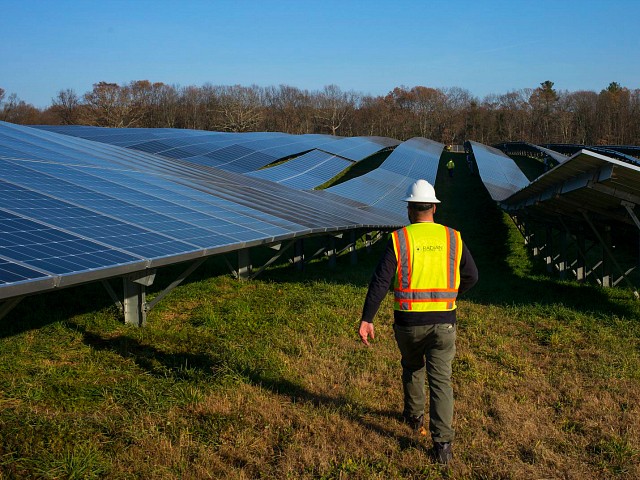White House Examining Plans that Deflect Sun’s Rays to Cool Earth
The White House is open to studying research that details methods of deflecting sunlight away from the earth’s surface to cool the atmosphere and halt “climate change.”
“Stratospheric aerosol injection (SAI) and marine cloud brightening” is mentioned in the paper that reportedly also sets out unspecified research in “cirrus cloud thinning.”
Officials suggested in a report released Friday that limiting sunlight to rapidly cool the planet, a solar geoengineering process known as solar radiation modification (SRM), could hold a viable future.
The possible consideration comes at the same time the Biden administration embraces solar panels as a way to produce energy via the sun’s direct rays.
Joe Biden is bragging that his administration is building one of the world’s largest solar plants, not in the United States but rather in the Central African nation of Angola. https://t.co/UUeJzc9Zfa
— Breitbart News (@BreitbartNews) June 15, 2023
The congressionally mandated report released by the Office of Science and Technology Policy shows the research team has been examining “geoengineering” methods to keep the sun rays from accelerating global warming.
As the University of Oxford notes in its entry on the subject, “geoengineering” is “the deliberate large-scale intervention in the Earth’s natural systems to counteract climate change,” Fox News reports.
According to the report titled “Congressionally-Mandated Report on Solar Radiation Modification,” the types of geoengineering methods the Biden administration is looking into are “stratospheric aerosol injection (SAI) and marine cloud brightening.”
BIDEN FLASHBACK: Can’t Afford to Heat Your House This Winter? Here’s Some Tax Credits for Solar Panels
The White House / Facebook
Additionally, the paper reportedly mentions there is research in “cirrus cloud thinning.”
The introduction to the report as seen by Fox News indicated research into “space-based approaches” has not been occurring as “geoengineering” is easier to implement.
The document read, “The focus on atmospheric approaches also follows from their greater near-term feasibility relative to space-based approaches.”
There is no government policy attached to the document yet as it’s just a research document but the report also says there is good logic for a cohesive research agenda on this topic.
It reads, “This Research Plan focuses on improving understanding of the potential impacts of SRM, rather than on technologies needed for deployment. Much of this research would contribute to our ability to understand basic climate processes and effects of human greenhouse gas emissions, as well as outcomes of SRM.”
The summary continues, “A program of research into the scientific and societal implications of solar radiation modification (SRM) would enable better-informed decisions about the potential risks and benefits of SRM as a component of climate policy.”

File/ Employees from a Radian Generation’s operations and maintenance team change out a faulty solar inverter along a row of solar panels December 4, 2017 at the family-owned Knowlton Farm in Grafton, Massachusetts. (Robert Nickelsberg/Getty Images)
Despite the clear disclaimer others feel confident the White House likes what it sees.
“The fact that this report even exists is probably the most consequential component of this release,” Shuchi Talati, the executive director of the Alliance for Just Deliberation on Solar Geoengineering, told Politico.
“This report also signals that the U.S. government is supportive of well-governed research, including outdoor experimentation, which I think is quite significant.”
A landmark report released in March 2021 from the National Academies of Sciences, Engineering, and Medicine addressed three kinds of solar geoengineering possibilities: stratospheric aerosol injection, marine cloud brightening, and cirrus cloud thinning.
Stratospheric aerosol injection would involve flying aircraft into the stratosphere, or between 10 miles and 30 miles skyward, and spraying a fine mist that would hang in the air, reflecting some of the sun’s radiation back into space.





Comments are closed.